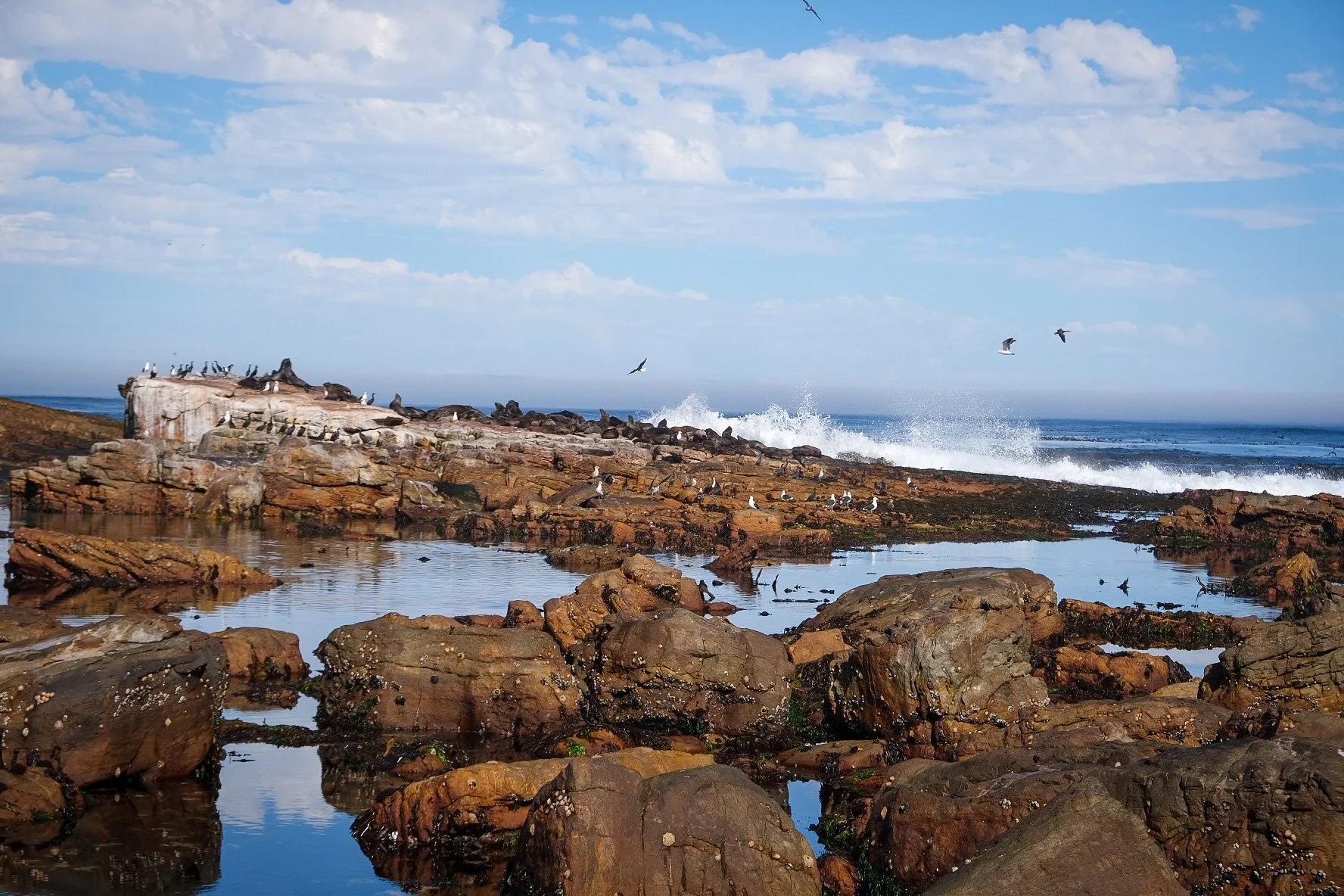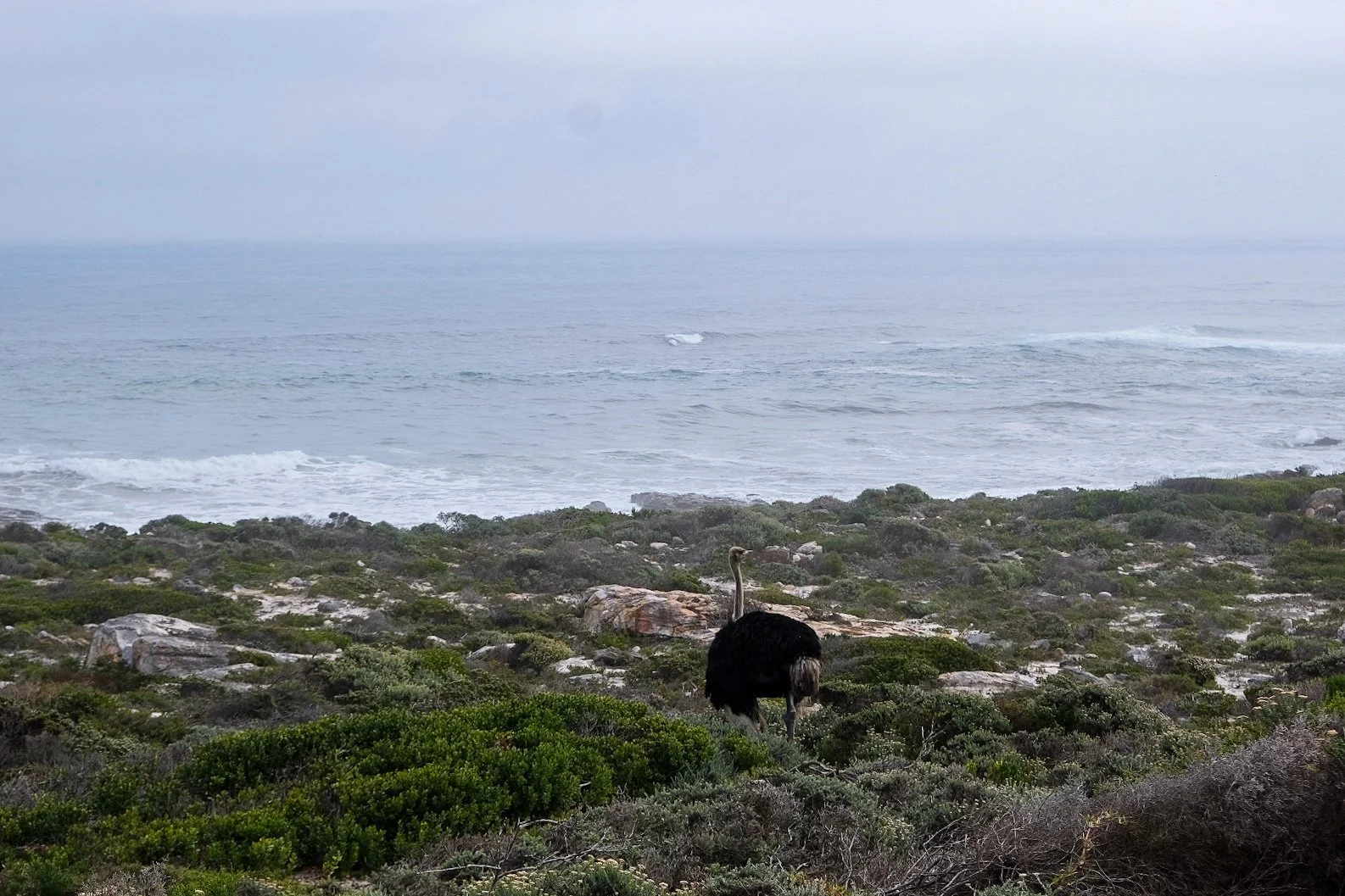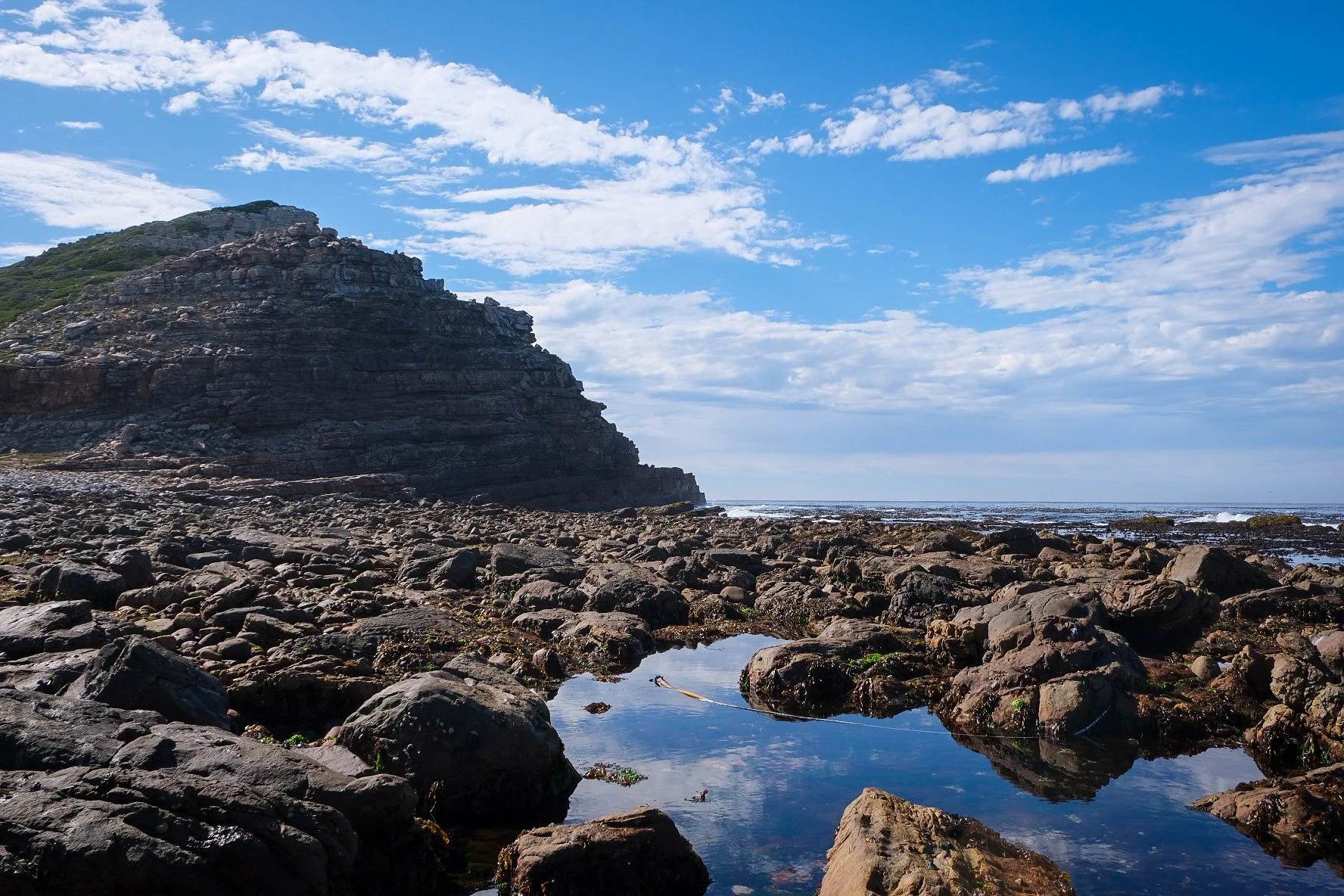Hiking Cape Point
On April 6th I took out my hiking gear and started on adventures to experience the most south-western point of the African Continent, Cape of Good Hope.
Cape Point Nature Reserve is filled with rich biodiversity, rugged rocks, sheer cliffs, spectacular views, and dazzling viewpoints around every corner. The cliffs tower more than 200 meters above the sea cutting directly into the ocean.
The day we went I must say the weather can change drastically from one moment to the next. The photos you will see could look like they have been taken on two different days but in reality, it's the same one.
Brief History of Cape Point
Bartolomeu Dias, the Portuguese explorer, was the first to round the Cape Peninsula in 1488. Due to the quick shifts in weather, he labeled it “Cape of Storms”. Over a decade later, Vasco da Gama navigated the same route and sailed down the coast of Africa, successfully opening a new trading route for Europe with India and the Far East.
The name “Cape of Good Hope” comes from the optimism gained from the opening of this new sea route to India and the East.
Hiking Adventures
When we started out the weather was beautiful, sunny with breathtaking clouds and the ocean at low tide.
We parked the car at Cape of Good Hope and started our hike from this location which would have us going in a circle. I highly recommend that if you go to the Cape Point Reserve you actually hike it. Many people just buy the ticket to get in and drive to each of the sightseeing locations. Honestly, that is a waste of money and you miss out on so much by not taking the time to breathe in the natural beauty. (that is to say, pack lots of water, a jacket in case the weather turns, a hat, and if your like me lots and lots of sunscreen)
The water was so far out that we ended up wanting to walk out on the rocks to get a better photo of the seals laying in the sun. I am glad we did this earlier in the day because by the time we got back, the water had come in.


























I saw Ostriches in the wild for the first time! Amazing! I knew they were the largest flightless bird, but getting to walk beside them while you are hiking is both exciting and terrifying. Those males when you get close to the female do not like that at all. I was casually walking by trying not to gain attention and this male did not like me getting near his laddies. Did you know that they are only natively found in Africa?! Another fun fact is that during mating season the beak, legs, and necks of the male ostrich will change color according to their names, for example, the Zimbabwean Blue and Kenyan Red. I will say apparently both male and female ostriches take time sitting on the eggs, females during the day and males at night (unlike chickens these birds are sharing the parental responsibility) Okay one more fact is that while males do usually mate with two to several females they choose a ‘major female’ to form a pair bond with.
A scarier moment on the hike was a chance encounter with a Puff Adder. Now this was not on purpose but rather very much an accident. It had gotten considerably foggy and misty as the clouds covered the sun and while we were walking down this part of the hiking trail I took over the lead. As I tend to stumble on rocks I am always looking down to see where I am stepping. Thank goodness because there in the middle of this tiny space was a Puff Adder.
We did not see each other a first but once I did you best believe my noise kinda sounded like a ghost and I was more surprised than terrified… at first. I wish I had my camera and wanted to go back for a photo but after explaining the exact details of this snake I realized it probably wasn't the best idea. The snake also decided to start coming in my direction when I scurried away, but thankfully went on its way and we decided to take a new path.
The Puff Adder is widespread over much of sub-Saharan Africa and is highly venomous. Of course right as this experience happened just that week we had been hearing in the news how there are shortages of anti-venom.
In total with all the stopping for photos, slight detour with a snake, and exploring the abandoned school house buildings, I’d say it took us about 4 ½ hours. This was such an incredible experience and the whole day is one of my favorite from my time in South Africa.
Thank you for reading and be on the lookout for many posts this week! I recently just landed in Belgrade, Serbia and have lots to write. Once again thank you for reading and any comments, questions, please feel free to email maiashelbyhay@gmail.com.






